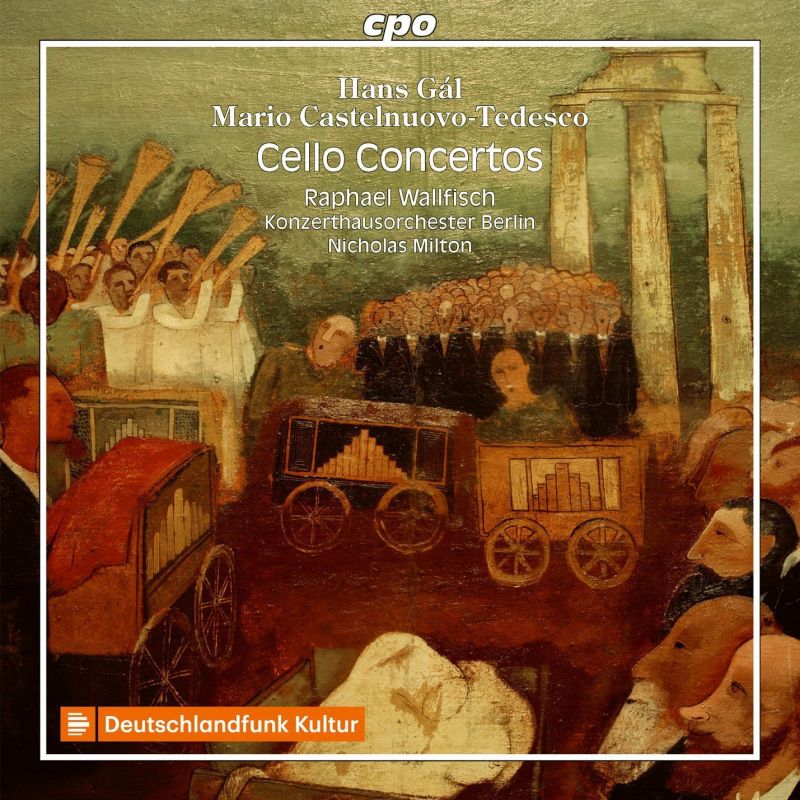GÁL; CASTELNUOVO-TEDESCO Cello Concertos
View record and artist detailsRecord and Artist Details
Composer or Director: Hans Gál, Mario Castelnuovo-Tedesco
Genre:
Orchestral
Label: CPO
Magazine Review Date: 02/2018
Media Format: CD or Download
Media Runtime: 65
Mastering:
DDD
Catalogue Number: CPO555 074-2

Tracks:
| Composition | Artist Credit |
|---|---|
| Concerto for Cello |
Hans Gál, Composer
Berlin Concert House Orchestra Hans Gál, Composer Nicholas Milton, Conductor Raphael Wallfisch, Cello |
| Concerto for Cello and Orchestra |
Mario Castelnuovo-Tedesco, Composer
Berlin Concert House Orchestra Mario Castelnuovo-Tedesco, Composer Nicholas Milton, Conductor Raphael Wallfisch, Cello |
Author: Andrew Mellor
Haas is careful with his comparisons; we’re dealing with composers whose paths didn’t cross but who did work to ‘organically classical’ (rather than neoclassical) templates. Gál, of course, suckled on Brahms while Castelnuovo-Tedesco was closer to his country’s avant garde. You can hear as much in the two scores but strength of musical personality is another question.
Both concertos are fascinating to encounter but Gál’s is less demonstrative and more moving. His was no comfortable exile and the tragedy that coloured it is a direct context for the concerto of 1944. Perhaps the most overt pain is heard in the flute of the second movement, which tries in vain to flutter free. The cello sings more of longing and hope, which prepares the work’s heartening ending: whimsical then suddenly, forcefully optimistic.
Gál’s cello also intertwines with an oboe to beautiful effect but Castelnuovo-Tedesco’s orchestration is more glitzy, a sonic Hollywood to Gál’s Edinburgh. The language is bolder too but the 1935 score doesn’t feel as tight and can seem stylistically displaced, from the Kurt Weill-like song of its slow movement on the double-stopped cello to the swashbuckling spirit of the finale (which prompts a comparison with Korngold’s shorter but more imposing concerto). The piece was written for Piatigorsky, Raphael Wallfisch’s teacher. Despite the link, and the extent to which Wallfisch inhabits it, I wouldn’t mind betting that Gál’s work moved him more too.
Discover the world's largest classical music catalogue with Presto Music.

Gramophone Digital Club
- Digital Edition
- Digital Archive
- Reviews Database
- Full website access
From £8.75 / month
Subscribe
Gramophone Full Club
- Print Edition
- Digital Edition
- Digital Archive
- Reviews Database
- Full website access
From £11.00 / month
Subscribe
If you are a library, university or other organisation that would be interested in an institutional subscription to Gramophone please click here for further information.




